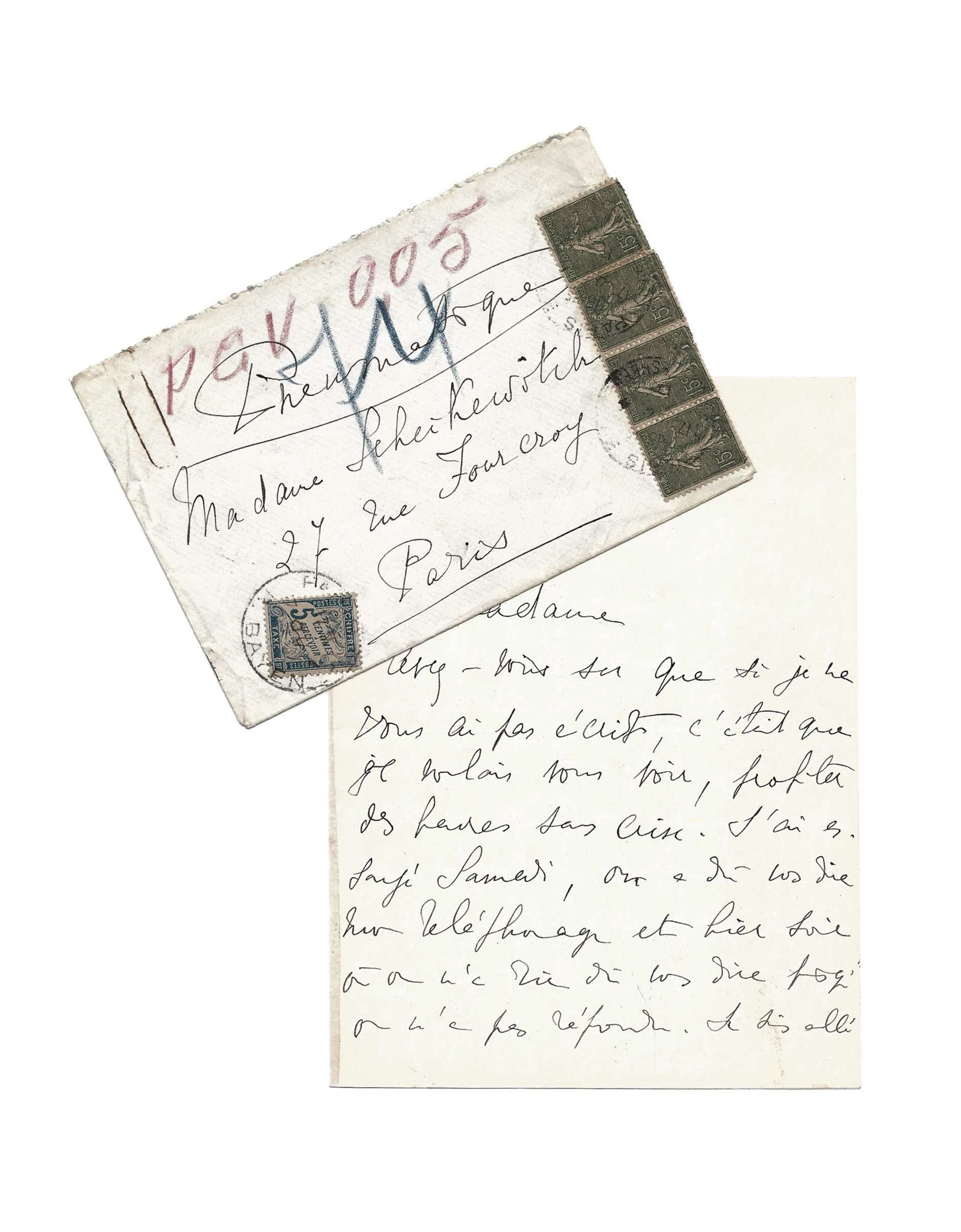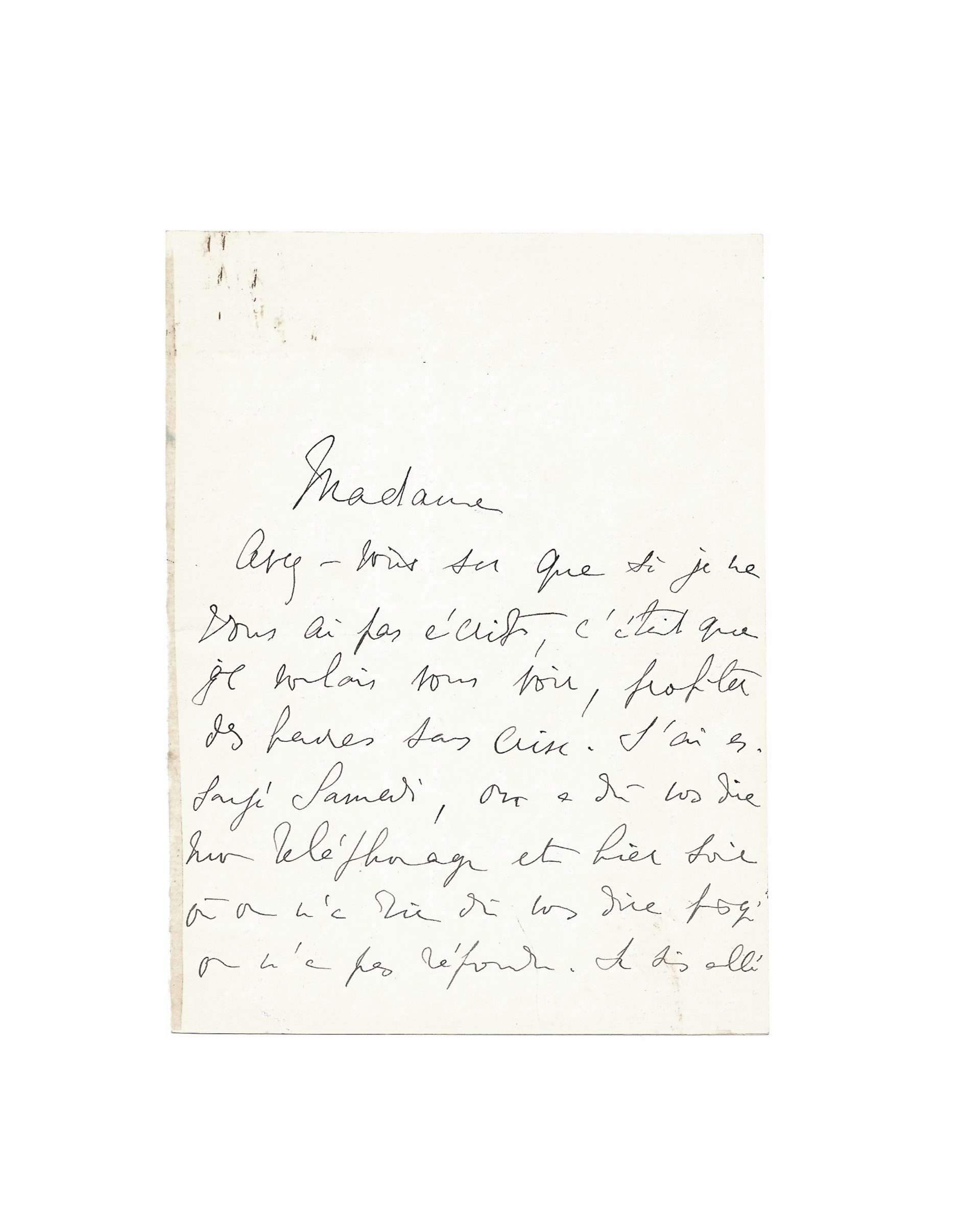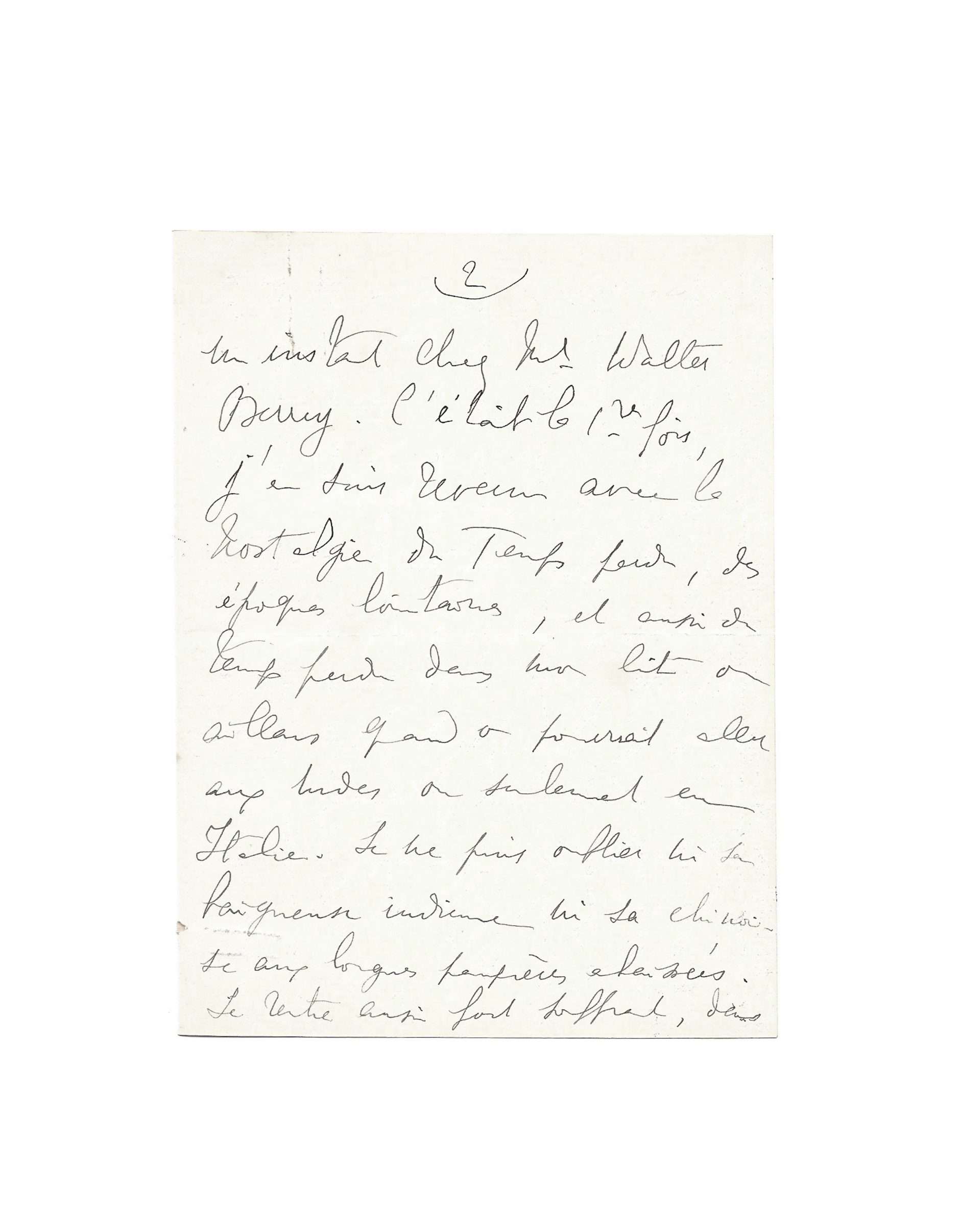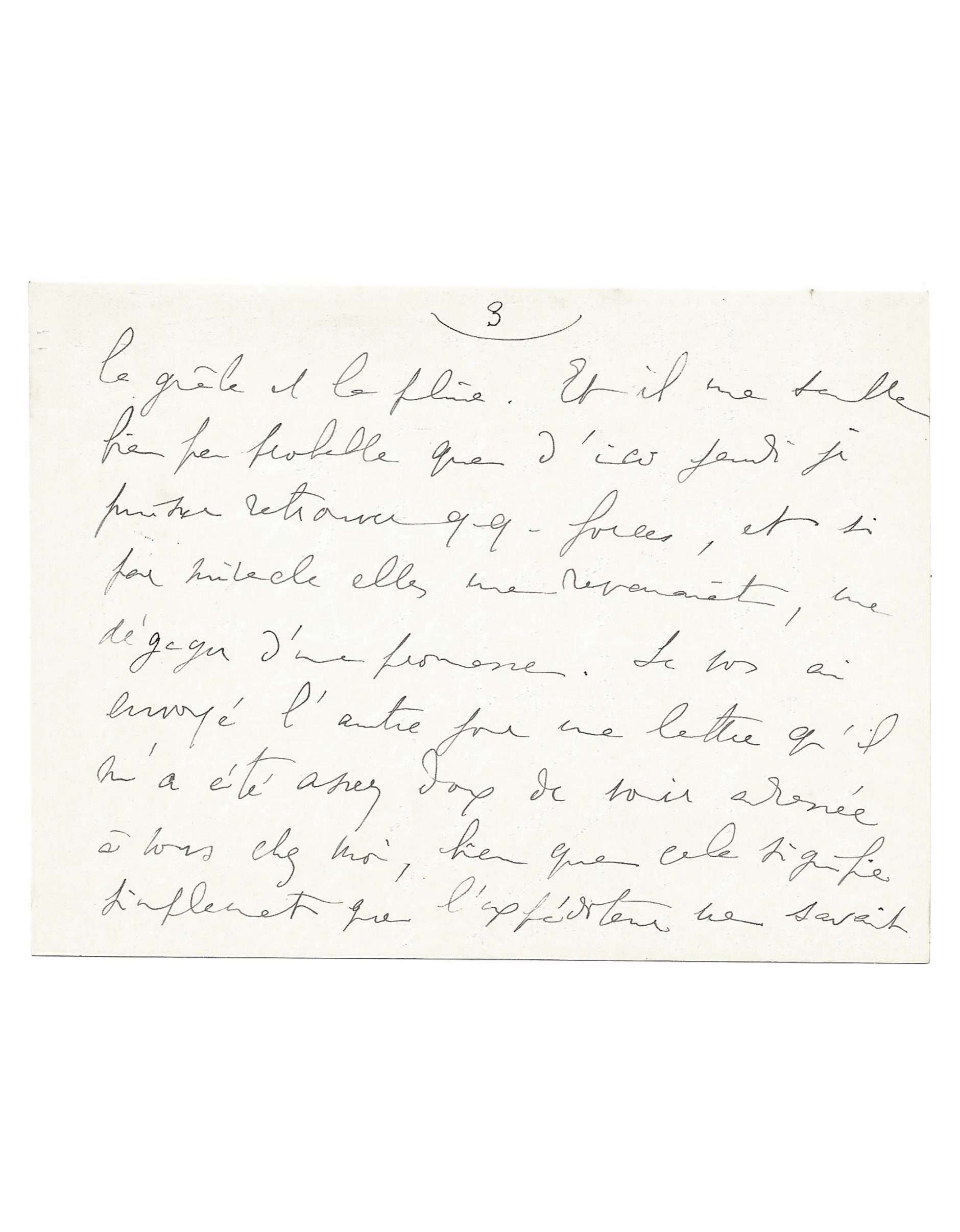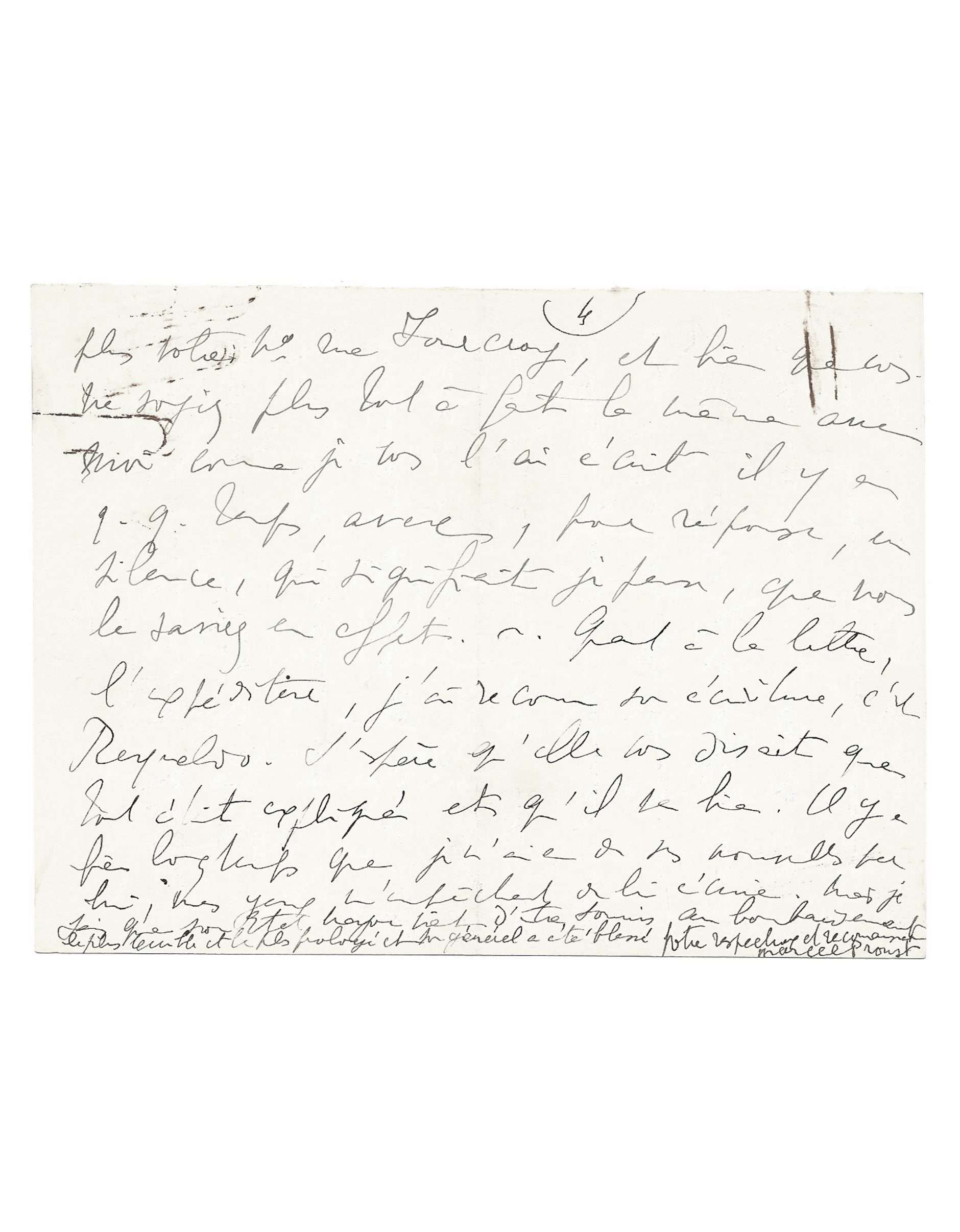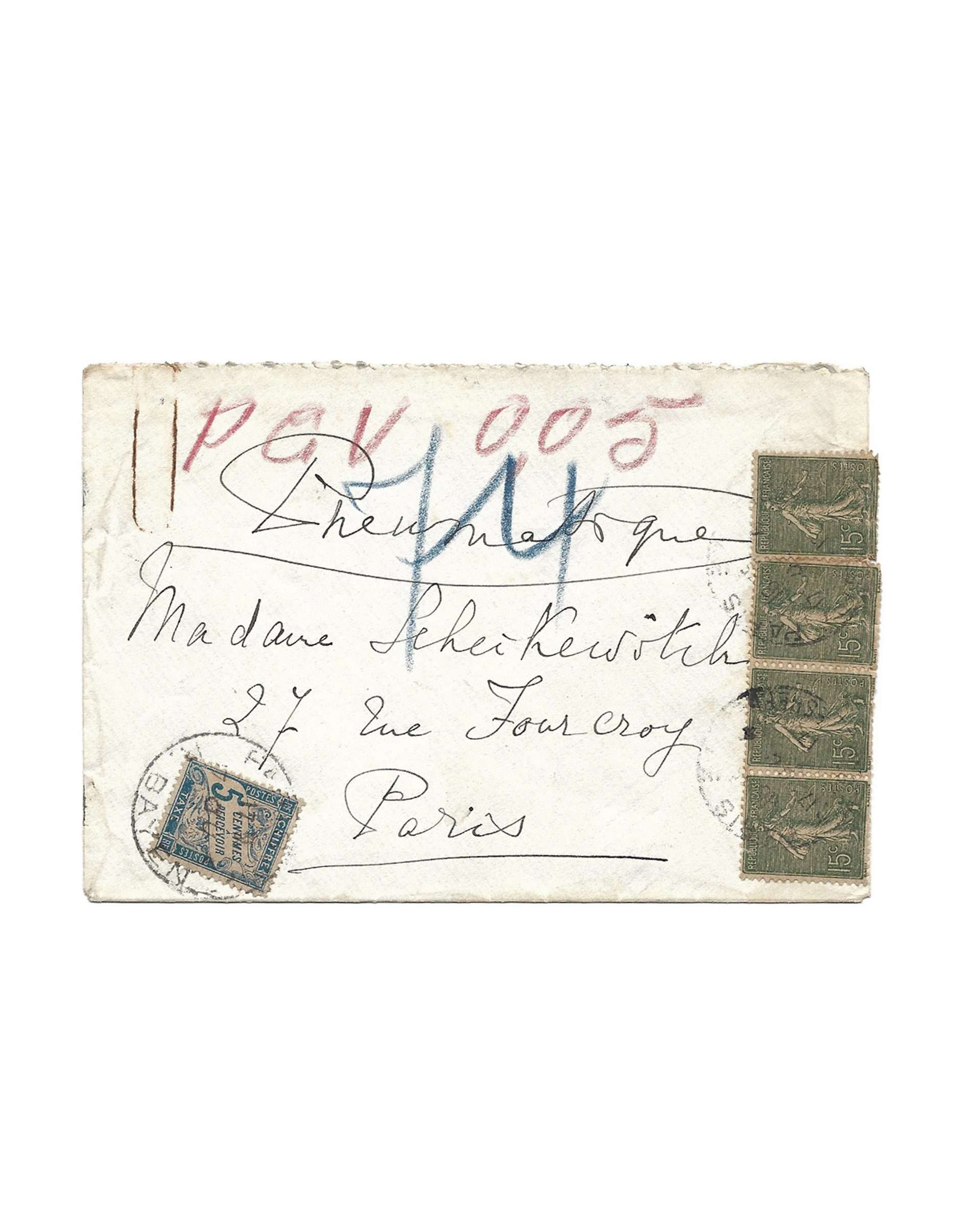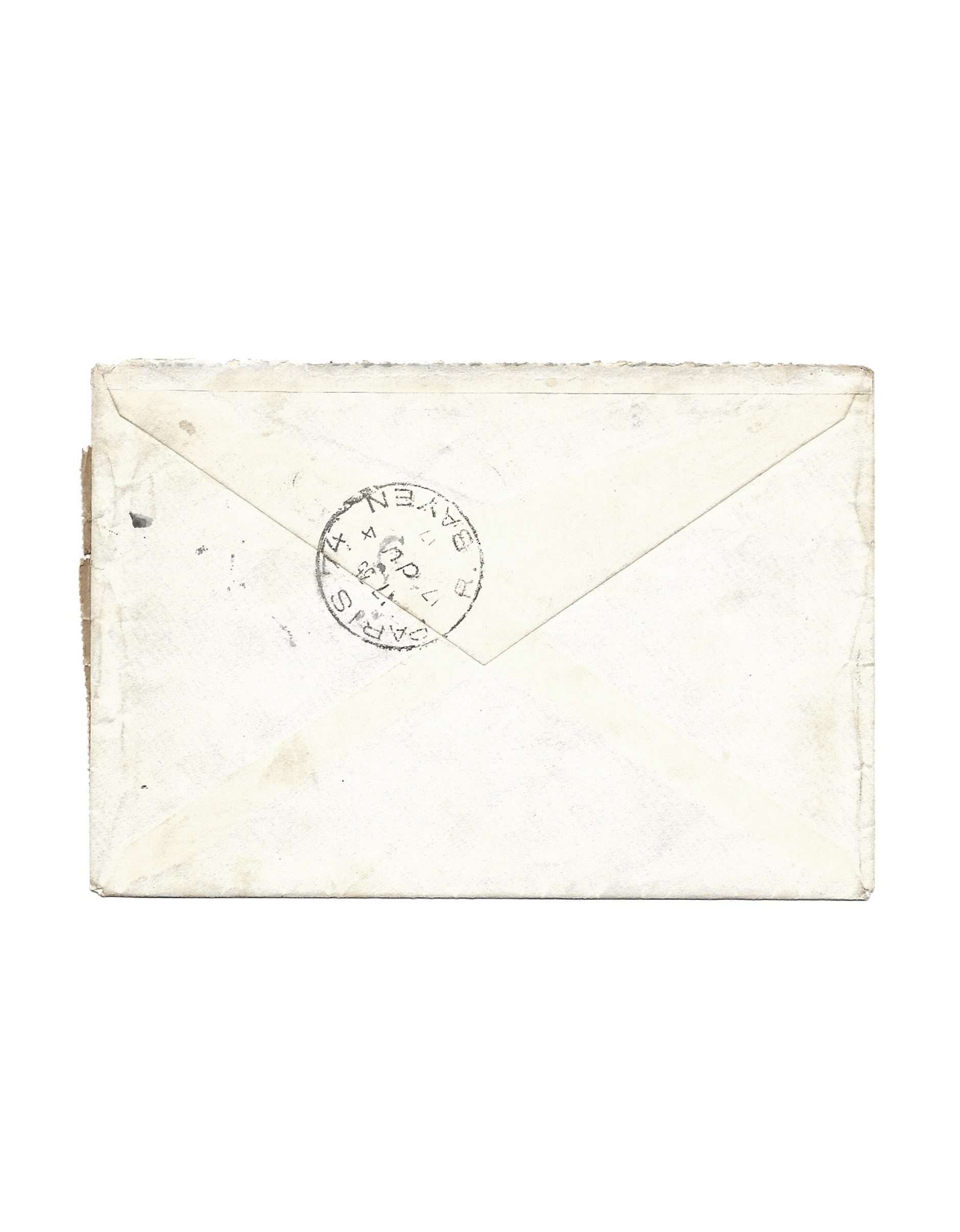PROUST, Marcel (1871-1922)
Autograph letter signed « Marcel Proust » to Marie Scheikévitch
N.p, 17th April 1917, 4 pp. large in-8°
« I came back with nostalgia for Lost Time… »
Fact sheet
PROUST, Marcel (1871-1922)
Autograph letter signed « Marcel Proust » to Marie Scheikévitch
N.p, 17th April 1917, 4 pp. large in-8°
Pneumatique letter, with enveloppe
Paper clip marks, previously mounted (see scans)
Proust returns nostalgic from his visit to his friend Walter Berry, then worries about Reynaldo Hahn, mobilized at the Trench War
« Madame,
Avez-vous su que si je ne vous ai pas écrit, c’était que je voulais vous voir, profiter des heures sans crise.
J’ai essayé samedi, on a dû vous dire mon téléphonage, et hier soir, où on a rien dû vous dire puisqu’on n’a pas répondu.
Je suis allé un instant chez M. Walter Berry.
C’était la première fois, j’en suis revenu avec la nostalgie du Temps perdu, des époques lointaines, et aussi du temps perdu dans mon lit ou ailleurs quand on pourrait aller aux indes ou seulement en Italie. Je ne puis oublier ni sa baigneuse indienne ni sa Chinoise aux longues paupières abaissées.
Je rentre aussi fort souffrant, dans la grêle et la pluie. Et il me semble bien peu probable que d’ici jeudi je puisse retrouver q[uel]q[ues] forces, et si, par miracle, elles me revenaient,
me dégager d’une promesse.
Je vous ai envoyé l’autre jour une lettre qu’il m’a été assez doux de voir adresser à vous chez moi, bien que cela signifie seulement que l’expéditeur ne savait plus votre numéro rue de Fourcoy, et bien que vous ne soyiez [sic] plus tout à fait la même avec moi comme je vous l’ai écrit il y a quelques temps, avec, pour réponse, un silence, qui signifiait, je pense, que vous le saviez en effet, – quant à la lettre, l’expéditeur, j’ai reconnu son écriture, c’est Reynaldo. J’espère qu’elle vous disait que tout était expliqué et qu’il va bien. Il y a bien longtemps que je n’ai de ses nouvelles par lui, mes yeux m’empêchent de lui écrire. Mais je sais bien que son Etat-Major vient d’être soumis au bombardement le plus terrible et le plus prolongé et son général a été blessé.
Votre respectueux et reconnaissant
Marcel Proust »
Walter Berry (1959-1927) had recently invited Proust to visit his admirable collections of books, paintings and objets d’art. An American diplomat and jurist, Berry was President of the American Chamber of Commerce. It seems that Proust had a great friendship with him (nothing more, no doubt, given Berry’s age). It is also to his American friend that Proust will dedicate, with his agreement, Pastiches et mélanges, published in 1919.
Marcel Proust’s main companion, the composer and conductor Reynaldo Hahn (1874-1947) was mobilized in the early hours of the Great War, on August 2, 1914. Fighting in Argonne in 1914, Vauquois in 1915 and 1916, he was promoted to corporal on April 17, 1917, the same day this letter was written. For these services he received a citation of praise which underlined “his carelessness of danger and his enthusiasm” and reported that he had “also earned the recognition of the 31st by glorifying in the music he composed the dead of the regiment.”
An intimate of Proust who did much effort in using her network for the publication of the first volume of The Search :
Marie Scheikevitch (1882-1964) was the daughter of a wealthy Russian magistrate and art collector who settled in France in 1896. George D. Painter described her as “one of the smartest and most prominent ladies of the new generation.” Patron of artists and writers, she frequented salons and then founded her own. She was friends with Jean Cocteau, Anna de Noailles, Reynaldo Hahn, the Arman de Caillavet family, among others.
A feeling of singular quality united Marcel Proust to Marie Scheikévitch. Although they met briefly in 1905 in Mme Lemaire’s salon, it was in 1912 that they really get to know eachother. There followed a correspondence that lasted until 1922, the year of the writer’s death. Seeing each other “almost every day” as she would later say (friends writing all the less as they see each other more), we know only 28 letters from Proust addressed to her.
She opened to him the doors of her salon, frequented by all that Paris had of illustrious personalities in literature and arts, so that he paid tribute to her in Sodome et Gomorrhe under the veil of Madame Timoléon d’Amoncourt, “a charming little woman, of a spirit, like her beauty, so ravishing, that only one of the two would have succeeded in pleasing “.
A fervent admirer of the writer, she spent a great deal at the time of the publication of the first volume of The Search, trying everything to put Proust in touch with the Parisian personalities she considered most capable of helping him. It was she who recommended him to her lover Adrien Hébrard, the influential director of the newspaper Le Temps, to obtain the famous interview of November 12, 1913 by Élie-Joseph Bois, on the eve of Swann‘s publication: This was the first significant article published in the major press and devoted to The Search. To thank her, Proust sent her a major inscription (recently acquired by the BnF) when Swann was published.
Bibliography:
Lettres à Madame Scheikévitch (1928), pp. 69-70
Correspondance, Kolb, t. XVI, n°44
Marcel Proust II – Biographie, Jean-Yves Tadié, Folio, pp. 522-523, 576
